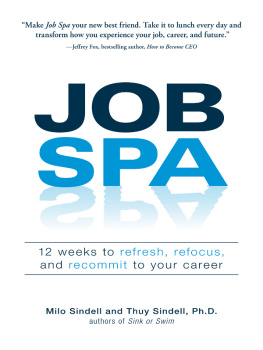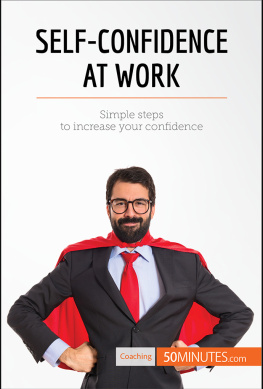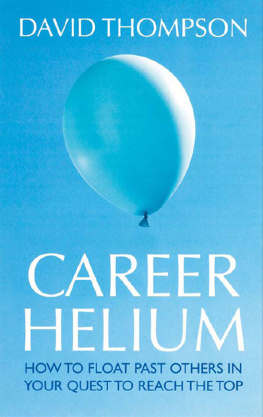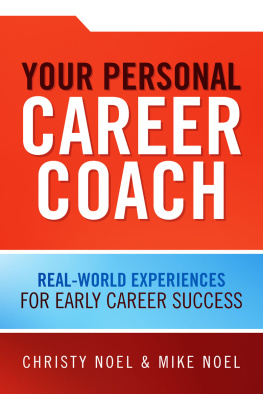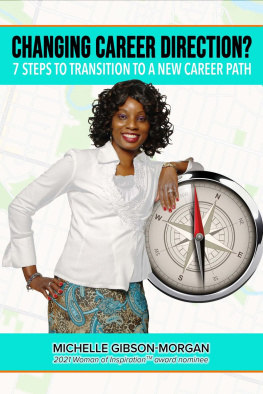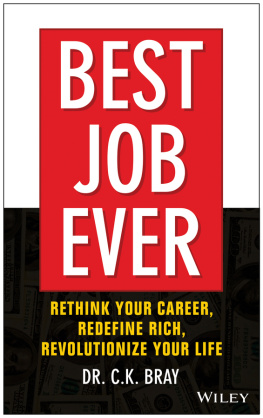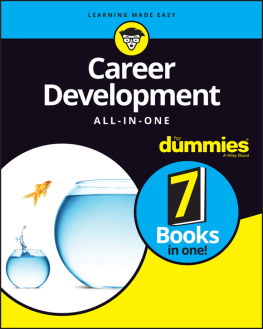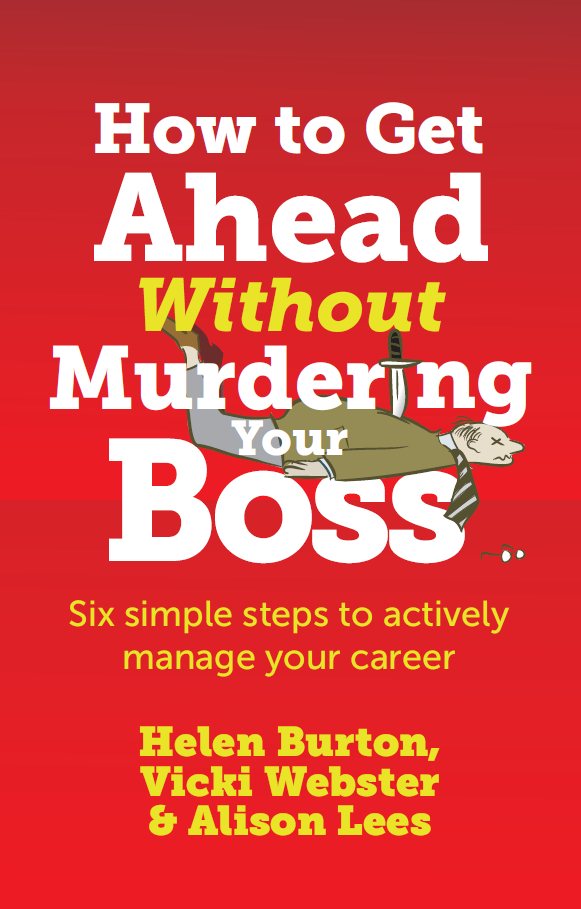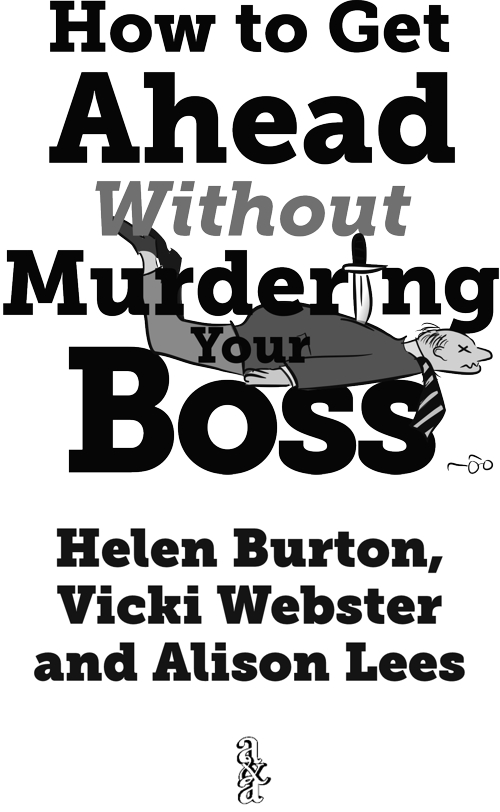This book is dedicated to our patient families, who supported us over the long, long life of this project, and to all the individuals we have career coached who got us started by asking for a career book that was contemporary, user friendly, practical and fun.
Introduction
Most of us can think of a time when we experienced strong feelings of dissatisfaction with our role or work environment, resenting work's influence over our life. Fortunately, we don't need to resort to murder to attempt to solve the problem! On the other hand, many people can feel powerless or unmotivated to manage their career and life.
It's our experience that up to ninety percent of people indicate feeling a lack of control over their careers, yet only five percent feel able or motivated to do something about it. This begs the question: why?
It could be that it's a lot easier to stay in our comfort zone and not think about it too much. Maybe we're scared that if we do something, we might fail, or we're not even sure what the first step is. After all, it's a lot more fun, and a whole lot less confronting, to watch the latest reality or crime show on TV, enjoy sport, surf the net or even clean out the kitchen cupboards, rather than explore other work options.
Like anything in life, effectively managing our own career takes some time but not as much as you might think effort and continuous learning to explore options, identify opportunities, make decisions and ultimately achieve our desired outcomes.
Personally, we believe in the power of taking responsibility for our own careers, whether that means keeping a job that we love, making a career change or simply learning new skills to increase our employability. This is equally important in buoyant markets or in harsh economic times with large scale job losses. We also believe that career management can be fun!
With this philosophy in mind, read on to learn how easy it is to develop and implement your own actionable career strategy.
SEEFAR: A quick overview of best practice career management
SEEFAR is a practical and results-driven process that merges the best features of the traditional plan-and-implement approach to career development with a new focus on having our own narrative and using action learning to gain clarity on what the best career opportunities are for us in order to feel successful and fulfilled.
S = Self-understanding and identity
The first step in an effective career management process is to ensure you have a clear understanding of yourself and the things that make you who you are the things that drive you and your motivations and values. Once you understand what makes you happy and satisfied at work the things that come naturally to you you can build these factors into your career decision making. For this part of the process, we will ask you to assess your skills, major competencies, interests, values, personality traits, style and family career history through assessment instruments and exercises. The assessment activities are amalgamated to develop a 'self-portrait', or identity, that links to possible career options.
E = External image
Once you have a clear understanding of yourself, the next step is to understand how others perceive you. This is important to ensure the career options you consider are realistic and inline with your reputation. By examining your external image, you recognise that others often determine your access to opportunities and your selection for new positions or projects, so it is essential that you understand what impression you make on other people as this is how you create your reputation.
E = Environment
Career management needs to be practical to provide meaningful outcomes. Understanding the marketplace is a vital part of career decision making. Activities in this part of the process assist you to explore opportunities and build business relationships to access them.
F = Financial objectives
The best career plans can fall apart if they are not aligned to your financial goals. For example, taking time off work to complete full-time study or taking a reduction in salary to move to a new department/unit will not be sustainable if it doesn't meet your financial needs. This part of the process focuses on identifying your financial goals and ensuring compatibility with your career goals.
A = Action and reflection
The chaotic nature of careers means that opportunities can arise unexpectedly. Without a robust career management process to assess the viability of each option, you run the risk of choosing a direction that you may regret. Additionally, the best way to determine whether something is right of you is to try it out first, especially where you are considering a significant career transition. This phase facilitates a detailed exploration of options through crafted experiments, for example secondments and special projects. This action-and-reflection model is linked to the need to take responsibility for your career direction.
R = Results
"It is a new day." The rules of work have changed, and you are more accountable for your own career management. All the analysis, reflection and planning will amount to nothing if you don't take action. A well developed, specific action plan with measurable short-term goals, mid-term direction and long-term aspirations will enable you to take control of your career, without having to murder your boss!
The SEEFAR Model

How to apply the SEEFAR model in your career is explained in Parts 2 and 3 of this book. Now sit back, relax and take some time to enjoy seeing the model in action in the story in Part 1.
1
The cushions in the lounge shifted slightly and Paul opened one eye. He glanced at the person creating the disturbance and grunted.
"Sorry about that," said the young man who was even now pushing his back into the well-padded lounge and joylessly re-arranging a briefcase and papers around him.
Paul nodded and pretended to resume his nap but kept one eye open, watching the performance unfolding in front of them. His neighbour was a magician the way a series of briefcases and folders just seemed to multiply and empty into each other until the lounge, footstool and coffee table in front of them were layered in sheets of impressive looking documents. Some of them even had flowcharts and graphs. Unable to contain his fascination any longer Paul sat up slowly, uncrossing his arms and stretching his legs out so that the tops of his boots could barely be seen under the hem of his heavily worn jeans. He ran his hands through his curls, shook his head and glanced up at the arrivals and departures information. "Bugger."


